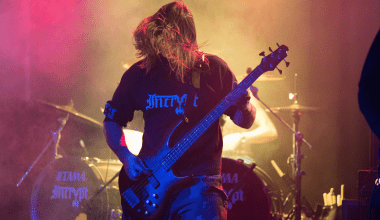What is Physical Music Distribution?
In today’s music industry, digital platforms often grab the spotlight. But physical music distribution, which includes CDs, vinyl records, and even cassettes, continues to play a vital role for artists. It’s not just about nostalgia; it’s a smart way to connect with fans and create tangible memories.
Physical formats let your music live beyond streaming platforms. They add a personal touch to your brand and let listeners hold your art in their hands. Plus, physical copies often carry higher profit margins compared to digital royalties.
Why Physical Music Distribution Still Matters
1. Fan Connection
Owning a physical copy of an album means more than streaming a song online. For fans, it’s like holding a piece of the artist’s soul. Tangible products such as CDs or vinyl let fans feel closer to the artist, and they often keep these as collectibles.
2. Diversified Revenue
Streaming royalties are notoriously low, especially for independent artists. Physical sales offer better profit margins and help diversify your income. Fans are often willing to pay premium prices for signed albums or limited-edition vinyl.
3. Longevity
Unlike streaming platforms, which might one day remove your music, physical formats have a shelf life that lasts forever. As long as someone owns a copy, your music will continue to play.
4. Merchandising Opportunities
Pairing physical music with merchandise—like posters, T-shirts, or stickers—creates bundles that fans love. These products often sell out quickly during tours or events.
Types of Physical Music Distribution Formats
1. Compact Discs (CDs)
CDs remain a staple for many musicians. They’re affordable to produce and compatible with most music systems, making them a popular choice for fans across generations.
2. Vinyl Records
Vinyl is experiencing a major comeback. Many listeners prefer the warm sound of vinyl over digital audio. Producing limited-edition vinyl can also create excitement among collectors.
3. Cassette Tapes
Cassettes are a niche format but have a loyal fanbase. They’re inexpensive to produce and appeal to those who love retro vibes.
4. Box Sets and Special Editions
Combining your music with exclusive content—like behind-the-scenes footage, lyric booklets, or signed memorabilia—adds value and attracts die-hard fans.
How to Get Started with Physical Music Distribution
1. Understand Your Audience
Not all audiences prefer physical formats. Research your fanbase to see if there’s demand for CDs or vinyl. Surveys, social media polls, and concert feedback can help you decide which formats to prioritize.
2. Choose a Distributor
Partner with a music distributor that handles physical formats. Companies like Deliver My Tune offer comprehensive solutions for music distribution, ensuring your work reaches fans globally.
3. Design Your Packaging
Invest in creative and high-quality artwork for your album cover. This is the first thing fans notice, and an eye-catching design can significantly boost sales.
4. Decide on Quantities
Start small if you’re unsure about demand. Producing limited quantities helps reduce financial risk and creates exclusivity, encouraging quicker sales.
5. Promote Your Products
Use your social media platforms, email newsletters, and live shows to market your physical music. Highlight unique features like signed copies or exclusive bundles.
Physical Music Distribution: Tips for Success
Leverage Events and Tours
Selling CDs and vinyl at concerts is one of the best ways to reach your fans directly. Create a special offer like “Buy a CD and get a meet-and-greet pass.”
Offer Pre-Orders
Pre-orders create buzz and help you gauge demand. They also ensure fans commit to buying your album before its release date.
Bundle Deals
Combining your physical album with merchandise or concert tickets can increase overall sales. For instance, “Buy a vinyl and get a free poster.”
Collaborate with Stores
Reach out to local music stores or independent record shops to stock your physical albums. Partnering with retailers helps increase visibility.
Challenges in Physical Music Distribution
1. High Production Costs
Producing physical formats, especially vinyl, can be expensive. This is why it’s important to carefully plan your quantities and pricing.
2. Storage and Shipping
Unlike digital music, physical products require storage and shipping logistics. Partnering with reliable services can help manage these challenges efficiently.
3. Declining CD Players
Many modern devices no longer have CD players, which may limit your audience. However, vinyl and cassettes are growing in popularity, balancing this drawback.
How Deliver My Tune Can Help
Deliver My Tune simplifies the entire process of music distribution. From designing cover art to delivering your CDs or vinyl to fans, the platform offers end-to-end support. Their physical music distribution services ensure your work reaches fans globally while providing tools to track sales and earnings.
The Future of Physical Music Distribution
While digital platforms dominate, physical formats will never go out of style. Artists who embrace both digital and physical strategies can maximize their reach and revenue. The tactile experience of owning music will always have a place in the hearts of true music lovers.
Conclusion: Is Physical Music Distribution Right for You?
Whether you’re an independent artist or part of a band, physical music distribution adds a personal touch to your career. It strengthens fan connections, boosts revenue, and gives your music a lasting presence. Start small, learn from the process, and watch your career grow.
For further reading, explore these related articles:
- Billboard Dreams: How Karan Aujla Took Punjabi Music Global
- Everything You Need to Know About the Billboard Dance Chart
For additional resources on music marketing and distribution, visit Deliver My Tune.






